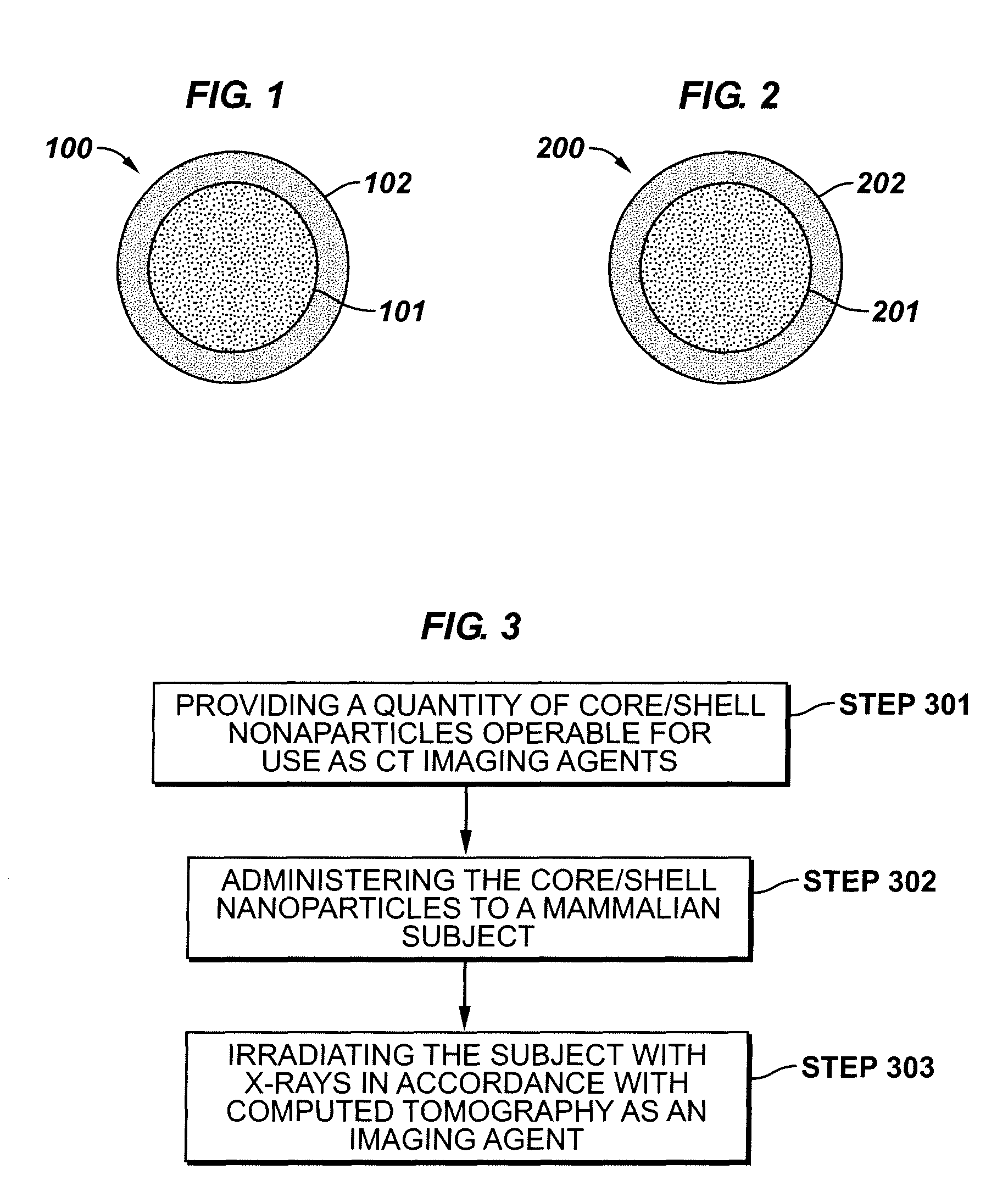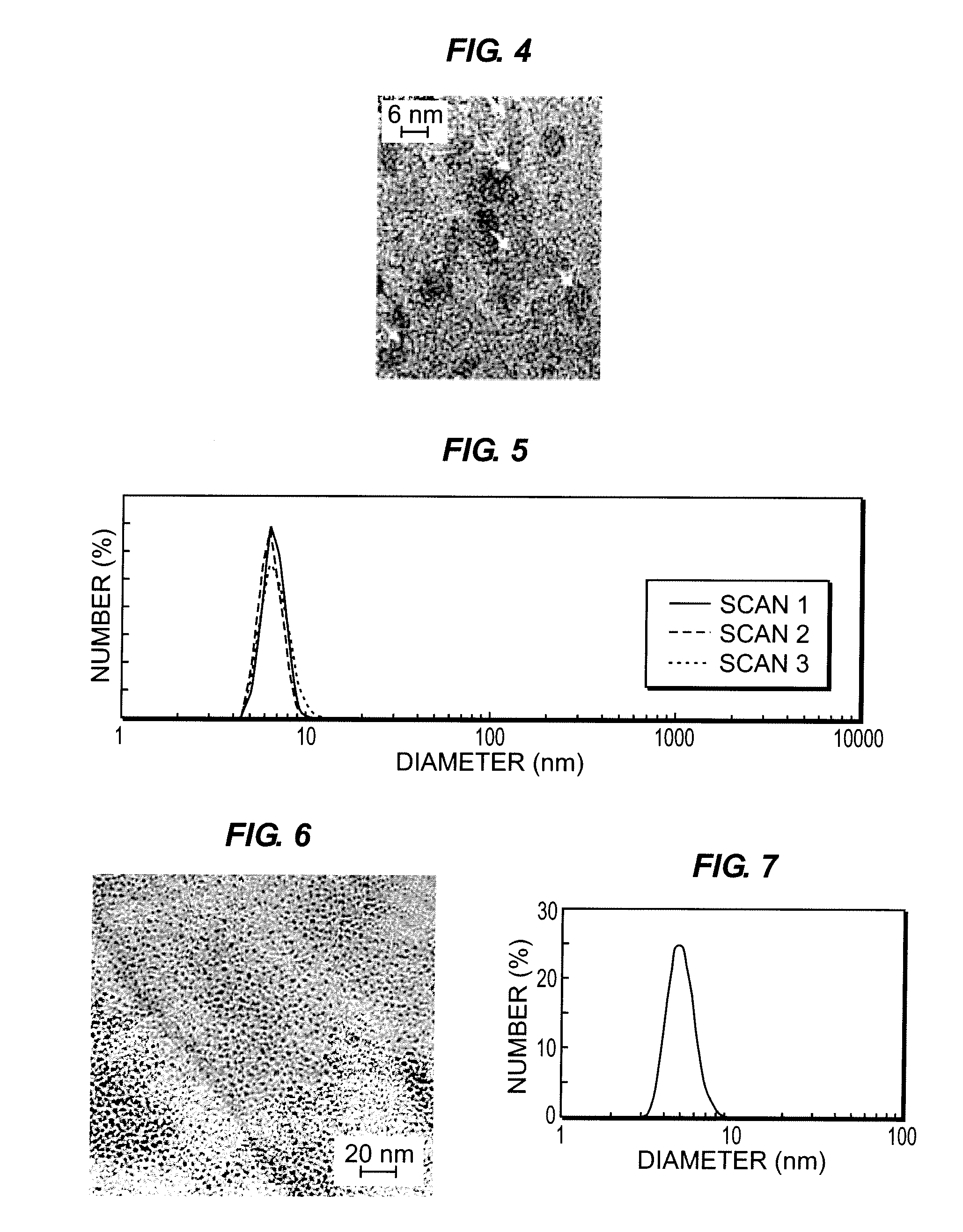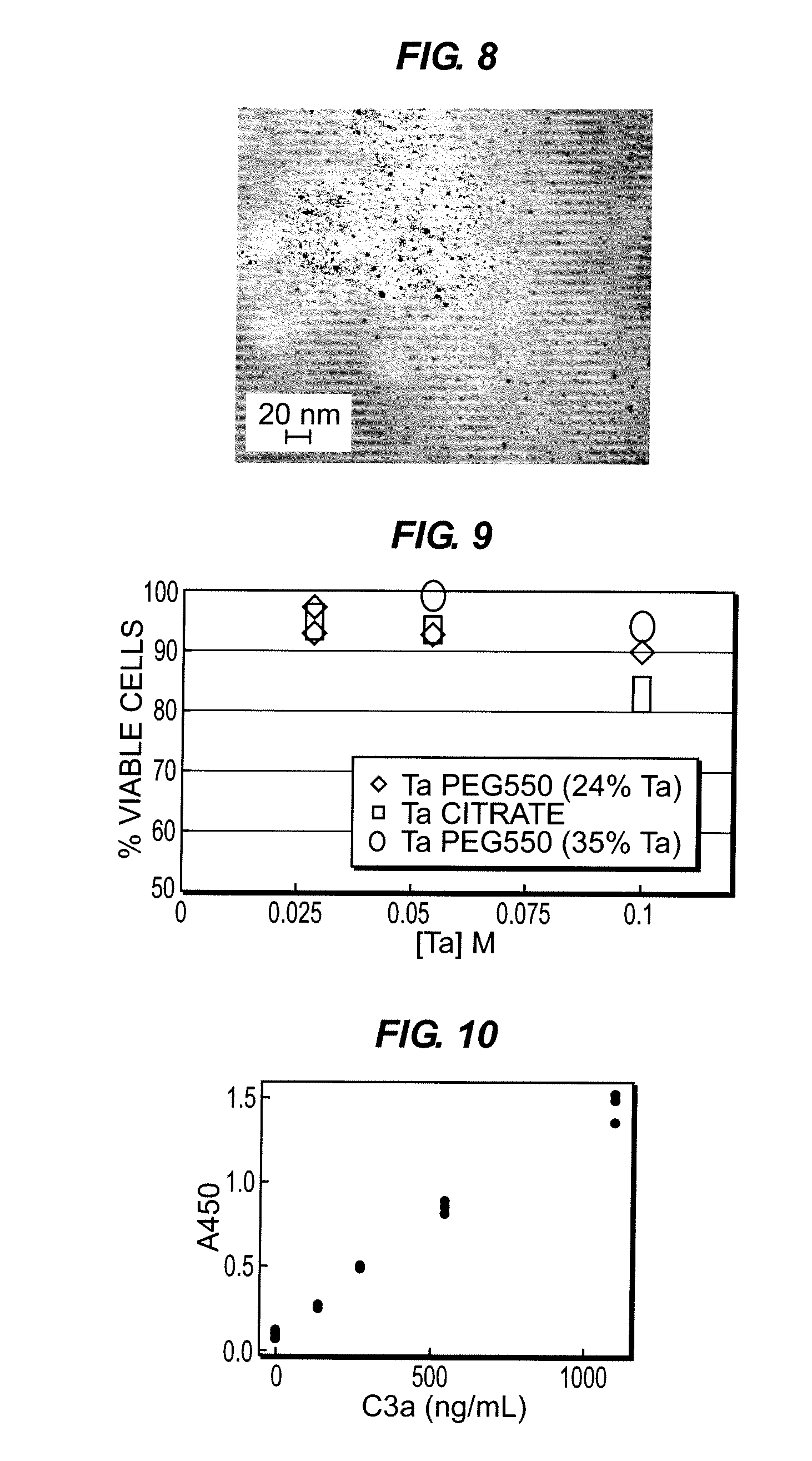Nanoparticle-based imaging agents for X-ray/computed tomography and methods for making same
a technology of computed tomography and nanoparticles, applied in the direction of pharmaceutical delivery mechanism, pigment treatment with organosilicon compounds, chemistry apparatus and processes, etc., can solve the problems of poor cost-effectiveness, difficult to target these agents to disease sites, and robust synthesis and instability
- Summary
- Abstract
- Description
- Claims
- Application Information
AI Technical Summary
Benefits of technology
Problems solved by technology
Method used
Image
Examples
example 1
[0061]This Example serves to illustrate how a CT imaging agent can be prepared, in accordance with some embodiments of the present invention. In this particular Example, a passive shell is linked to an active core of hafnium oxide.
[0062]Hafnia nanocrystals (HfO2) were prepared from a suspension of hafnium oxychloride in ethanol. An organosilane-based coating was applied as follows: dilute 3-glycidoxypropyl(trimethoxysilane), GPTS was diluted using butanol (volume ratio 1:0.5) and pre-hydrolyzed step by addition of 0.1M HCl keeping the molar ratio of GPTS:H2O at 1:0.5. The resulting solution was subjected to vigorous stirring overnight at room temperature, then loaded with HfO2 nanocrystals. See Ribeiro et al., Appl. Phys. Lett. 2000, 77 (22), 3502-3504. FIG. 4 is a TEM image of active core / passive shell nanoparticles comprising a hafnium oxide core and polymeric shell, in accordance with some embodiments of the present invention.
example 2
[0063]This Example serves to illustrate how a CT imaging agent can be prepared, in accordance with some embodiments of the present invention. In this particular Example, a polymeric passive shell is linked to an active core of tantalum oxide. Further, in this particular Example, the shell formed about the core after the core is formed.
[0064]This example illustrates preparation of Ta2O5 nanoparticles for X-ray imaging: 34 ml of n-propanol, 0.44 ml isobutyric acid and 0.5 ml deuterium oxide were combined under nitrogen in the order specified and stirred for 30 minutes at room temperature. Tantalum ethoxide (1.87 g) was added in a drop-wise manner, albeit rapidly, and stirring continued under nitrogen for 18 hours. The tantalum ethoxide contains Ta(V), that is tantalum in the +5 valence state, a non-zero valence state. 2-[Methoxy(poly-ethylenoxy)propyl]trimethoxysilane (PEGsilane550, 4.832 g) was added to the stirred mixture as a 40 ml solution in n-propanol and the reaction was reflux...
example 3
[0066]This Example serves to illustrate how a CT imaging agent can be prepared, in accordance with some embodiments of the present invention. In this particular Example, a polymeric passive shell is linked to an active core of tantalum oxide. Further, in this particular Example, the shell formed about the core after the core is formed.
[0067]This example illustrates preparation of Ta2O5 nanoparticles for X-ray imaging: 34 ml of n-propanol, 0.44 ml isobutyric acid, and 0.5 ml deuterium oxide were combined under nitrogen in the order specified and stirred for 30 minutes at room temperature. Tantalum ethoxide (1.87 g) was added in a drop-wise manner, albeit rapidly, and stirring continued under nitrogen for 18 hours. The tantalum ethoxide contains Ta(V), that is tantalum in the +5 valence state, a non-zero valence state. Next, diethylphosphatoethyltriethoxysilane (PHS, 3 g) was added to the mixture as a 40 ml solution in n-propanol and the reaction was refluxed for 1.5 hours in air. Onc...
PUM
| Property | Measurement | Unit |
|---|---|---|
| mean diameter | aaaaa | aaaaa |
| mean diameter | aaaaa | aaaaa |
| energy | aaaaa | aaaaa |
Abstract
Description
Claims
Application Information
 Login to view more
Login to view more - R&D Engineer
- R&D Manager
- IP Professional
- Industry Leading Data Capabilities
- Powerful AI technology
- Patent DNA Extraction
Browse by: Latest US Patents, China's latest patents, Technical Efficacy Thesaurus, Application Domain, Technology Topic.
© 2024 PatSnap. All rights reserved.Legal|Privacy policy|Modern Slavery Act Transparency Statement|Sitemap



